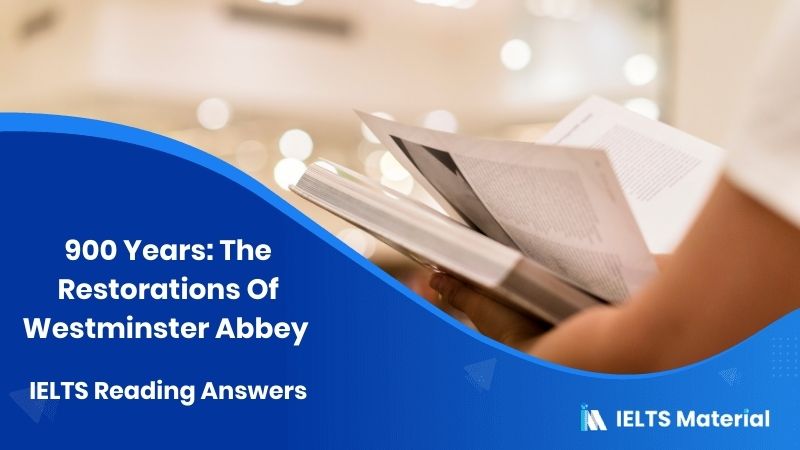Great Migrations Reading Answers
Table of Contents

Limited-Time Offer : Access a FREE 10-Day IELTS Study Plan!
The Academic passage ‘Great Migrations’ is a reading passage that appeared in an IELTS Test.
Ideally, you should not spend more than 20 minutes on a passage. Let’s see how easy this passage is for you and if you’re able to make it in 20 minutes. If not, try more IELTS reading practice tests from IELTSMaterial.com
Great Migrations





Answers
| Question Number | Answer | Explanation |
| 14 | FALSE | Paragraph 2 mentions that an ‘arctic tern’, on its 20,000 km flight, ‘will take no notice of a nice smelly herring’ (not pay attention to food offering) offered from a bird-watcher’s boat along the way. While ‘local gulls will dive voraciously for such handouts’ (gulls are easily attracted by offered food), ‘the tern flies on’. As the statement contradicts the information, the answer is ‘FALSE’. |
| 15 | TRUE | Paragraph 4 refers to migration as a complex issue, and ‘biologists define it’ (experts’ definition) ‘differently’ (vary), depending in part on ‘what sorts of animals they study’ (their area of study). As the statement agrees with the information, the answer is ‘TRUE’. |
| 16 | NOT GIVEN | In paragraph 5, the author opines that daily ‘vertical movements by zooplankton in the ocean’ – upward by night to seek food, downward by day to escape predators – ‘can also be considered migration’. ‘So can the ‘movement of aphids’ when, having depleted the young leaves on one food plant, their offspring then fly onward to a different host plant, with no one aphid ever returning to where it started. This is the opinion of the author, but it is not mentioned whether experts agree with it or not. Hence, the answer is ‘NOT GIVEN’. |
Unlock Answers
| 17 | TRUE | Paragraph 6 informs that ‘aphids’ will become ‘sensitive to blue light’ (from the sky) when it’s time for ‘takeoff on their big journey’, and ‘sensitive to yellow light (reflected from tender young leaves) when it’s appropriate to land’ (journey is affected by changes in light). As the statement agrees with the information, the answer is ‘TRUE’. |
| 18 | FALSE | Paragraph 6 discusses Dingle,an evolutionary biologist who studies insects. His definition cites five features that distinguish migration from other forms of movement. The value of his definition, Dingle argues, is that it ‘focuses attention on what the phenomenon of wildebeest migration shares with the phenomenon of the aphids’ (similarity between the migration of wildebeest and aphids is discussed), and therefore helps guide researchers towards understanding how evolution has produced them all. As the statement contradicts the information, the answer is ‘FALSE’. |
| 19 | G | Paragraph 1 states that the ‘biologist Hugh Dingle’ has identified five characteristics that apply, in varying degrees and combinations, to all migrations. They are ‘prolonged movements that carry animals outside familiar habitats’ (migratory routes); they tend to be ‘linear’ (follow a straight line), not zigzaggy. Hence, the answer is G (follow a straight line). |
| 20 | C | Paragraph 1 points out that ‘biologist Hugh Dingle’ has identified five characteristics that apply, in varying degrees and combinations, to all migrations. They involve ‘special behaviours concerning preparation’ (for migration or immediate purposes) such as ‘overfeeding’ (eat more) and arrival. Hence, the answer is C (eat more than they need for immediate purposes). |
| 21 | A | Paragraph 1 specifies that ‘migrating animals’ (animals during migration) maintain an intense attentiveness to the greater mission, which keeps them ‘undistracted by temptations and undeterred by challenges’ (are not discouraged by difficulties) that would turn other animals aside. Hence, the answer is A (be discouraged by difficulties). |
| 22 | E | Paragraph 2 The ‘arctic tern resists distraction’ (ignore distractions) because it is driven at that moment by an instinctive sense of something we humans find admirable: larger purpose. In other words, ‘it is determined to reach its destination’ (during migration). Hence, the answer is E (ignore distractions). |
| 23 | speed | Paragraph 7 brings out the fact that pronghorn are ‘dependent on distance vision’ (eyesight) and ‘speed’ ‘to keep safe from predators’ (avoid predators). They traverse high, open shoulders of land, where they can see and run. Hence, the answer is ‘speed’. |
| 24 | plains | Paragraph 7 reveals that the pronghorn is the fastest land mammal of the New World. One population, which spends the ‘summer in the mountainous Grand Teton National Park of the western USA’ (national park), follows a narrow route from its summer range in the mountains, across a river, and ‘down onto the plains’. ‘Here they wait out the frozen months’ (stay during winter), feeding mainly on sagebrush blown clear of snow. Hence, the answer is ‘plains’. |
| 25 | bottlenecks | Paragraph 7 states that pronghorns are notable for the invariance of their ‘migration route’ and the severity of its constriction at ‘three bottlenecks’. Hence, the answer is ‘bottlenecks’ |
| 26 | corridor/passageway | Paragraph 7 explains that ‘increasing development’ is leading toward a ‘crisis for the pronghorn’, ‘threatening to choke off their passageway’. In paragraph 8, it is further added that a National Forest has recognised the ‘path of the pronghorn’, much of which passes across its land, as a ‘protected migration corridor’. Hence, the answer is ‘corridor/passageway’. |
Check More IELTS Reading Answers
Also check :
Practice IELTS Reading based on question types

Start Preparing for IELTS: Get Your 10-Day Study Plan Today!
Explore other Reading Topics

Janice Thompson

Kasturika Samanta
Recent Articles

Kasturika Samanta

Kasturika Samanta

Janice Thompson







Post your Comments